- Home
- Antonia Fraser
The Warrior Queens Page 20
The Warrior Queens Read online
Page 20
As time went on, a further comparison would be made between Stephen’s wife, Queen Matilda, and her first cousin, the Empress Maud. Queen Matilda was another of those public women, intelligent and capable, with whom this early mediaeval period abounds. (Queen Matilda, like her cousin Maud, was also beautiful.) In Norman England, female capability was not infrequently tested when ladies had to hold castles against siege in their husbands’ absence, as the Countess of Norfolk had held Norwich in 1075. During the long battling years of the Anarchy, other women would come forward and perform a similar service, as the situation demanded it. Matilda of Ramsbury for example, mistress of Bishop Roger of Salisbury and mother of his children, commanded the Bishop’s castle of Devizes. 18
Like the Empress Maud, Queen Matilda conducted sieges and defended castles. She first appeared in the field in 1136 and received the surrender of Derby. But there was one obvious difference between the respective images which the two women presented to the world. Queen Matilda was acting on behalf of her husband and her young son Eustace, Stephen’s heir; the Empress Maud – ‘Matilda daughter of Henry’ – was basing her right on her father, but claiming it for herself. Just as Countess Matilda of Tuscany had a perfectly valid excuse to ride to battle, so did Queen Matilda of England; she could conduct herself as a Warrior Queen, unlike the Empress, without losing her notional femininity or being exposed to accusations of arrogance.
The comparison between Maud and Matilda reached its apogee in the nineteenth century in the reign of Queen Victoria with Agnes Strickland’s well-researched Lives of the Queens of England, which built on the presence of another queen upon the throne. The author dedicated this massive work by permission to Queen Victoria, quoting those words of Tacitus concerning Boadicea’s leadership, ‘they do not discriminate against women in matters of military command’, and adding a phrase from Boadicea’s own speech: ‘We British are used to women commanders in war.’ Agnes Strickland hereby explained that Queen Victoria ruled ‘not only by rightful inheritance and the consent of the people, but also in full accordance with the ancient British custom’. But a few chapters further on, Agnes Strickland is praising ‘the good Queen Matilda whose feminine virtues, endearing qualities and conjugal devotion … created the most powerful interest in her favour’ compared to ‘reports of the pride and hardness of heart of her stern relative and namesake’ (Maud). Above all, with a sublime unawareness of any possible irony involved, Agnes Strickland commended Queen Matilda for avoiding ‘all Amazonian display by acting under the name of her son’.19 (It was not an example that Queen Victoria inclined to follow with the future Edward VII.)
*
In his Historia Regum Britanniae Geoffrey of Monmouth was (as has been noted) concerned to dredge forth numerous examples of female sovereignty in Britain’s remote past. In his version of the story of King Lear, for example, the King’s youngest daughter Cordelia reigned in Britain after the death of her father and husband: ‘And Cordelia, now mistress of the helm of State in Britain … governed the kingdom in peace …’ That is, until her sisters’ sons rose up and ‘took it in high dudgeon that Britain should be subject to the rule of a woman’. (He may have based the story on the adventures of an actual queen of Central Gaul.)20 But as a matter of fact a queen regnant was not literally unknown in Europe at this period.
Queen Urraca of Aragon, who belonged to the generation older than Maud (she was born about 1080 and died in 1126), managed to maintain her sway successfully over an enormous tract of territory in Spain (as did her half-sister Teresa later in Portugal). Urraca was a twenty-seven-year-old widow, with two infant sons, when the death of her father resulted in her succession to his kingdom of León-Castile. Thirteen of her seventeen years as queen were in fact to be spent campaigning against her boorish second husband, a king of Aragon with the discouraging name (to an estranged wife) of Alfonso the Battler.
Among Urraca’s qualities however was an ability to manage the system in which she found herself. It used to be thought that Urraca’s policy decisions were the result of the advice of her supporter Bernard Archbishop of Toledo or of her lover the Count of Lara (Urraca’s reputation as a Warrior Queen formed part of the Voracity Syndrome: she too was no Holy Figurehead). A recent study has however suggested that it was the Queen herself, on the available evidence, who was very much in control.21 In particular she showed herself adept at managing the question of her son’s – and heir’s – rights, calling him to her aid by having him crowned with her at exactly the right psychological moment.
With Geoffrey of Anjou as a husband, this was not a solution which could immediately present itself to the Empress Maud. Significantly, it was in King Stephen’s acknowledgement of Henry FitzEmpress as his heir (following the fortuitous death of his own son Eustace in 1153) that the whole grisly matter of the Anarchy and the English succession was to be finally settled. That, however, in September 1139 when the Empress Maud landed on the south coast of England in pursuit of her claim, was more than a decade and many a battle away.
Joining forces with her stepmother, Henry I’s widowed Queen Adeliza, Maud first held Arundel Castle against Stephen’s besieging forces. At this point, in one of those odd twists in the lives of Warrior Queens, as when Zenobia managed to avoid execution on grounds of feminine irresponsibility, Maud’s sex told in her favour. For Stephen, reluctant to be seen besieging two high-born and presumably gentle ladies, allowed Maud to depart in order to join her loyal ally and half-brother (one of her father’s numerous bastards) Robert of Gloucester in the west. The Empress herself on the other hand displayed no such ‘female’ clemency when shortly afterwards the tide turned in her favour with the aid of the western barons. In February 1141 Stephen was captured. Maud, unmoved by the pleas of Queen Matilda and her son, sent him in chains to Bristol Castle.
The Empress now made a triumphant entry into Winchester, having assured its bishop Henry of Blois (one of Stephen’s brothers) that if he would join her she would make him chief among her counsellors, otherwise she would ‘lead all the host of England against him at once’. Bishop Henry accepted this offer that he could hardly refuse. At Winchester, Maud was duly acknowledged ‘Lady of the English’ (Domina Anglorum). The new Domina was not at this point additionally claiming the title of queen: or not generally so. Domina Anglorum was her style on the charters and of the two charters extant in which she is termed Regina Anglorum, one is described as ‘probably spurious’.22
It was not customary to employ the style of queen before coronation: it may be however that Maud did anticipate the style in an occasional charter out of impatience and a need to underline her authority. If so, this merely emphasized the fact that Maud’s coronation was of particular consequence both to her and to her supporters since her rival Stephen had of course already been crowned more than five years before. He thus enjoyed the sacramental benefit of an anointed king. At midsummer 1141 Maud, Domina as well as Empress, moved on to London, took up residence at Westminster and prepared to be crowned at its Abbey in her turn.
Unfortunately for Maud’s cause, Domina never was to be transformed officially into Regina. For the rest of the years of her conflict with Stephen, Maud had to endure the fact that, unlike herself, Stephen had received his crown at the hands of the Archbishop of Canterbury. This was no small advantage in this period when an ill-defined notion of kingship jostled with respect for the Church, a respect that the Church for one was keen to see maintained. (Repeated appeals to the Pope to ratify their claims were to be made by both contestants for the throne.) As it was, an uprising by the Londoners, incensed by Maud’s new financial exactions, caused her to flee precipitately to Oxford. Significantly in the context of the Warrior Queen, criticisms were uttered of the very voice in which these exactions were set out: ‘she sent for the richest men and demanded from them a huge sum of money, not with unassuming gentleness, but with a voice of authority’. And at the richest men’s refusal ‘her forehead wrinkled with a frown, every trace of a woman’s gent
leness removed’. With hindsight, one may wonder whether the most dulcet and submissive tone would actually have persuaded the citizens to part with their wealth – and whether Maud’s lack of ‘a woman’s gentleness’ did not merely provide an excellent additional excuse for not doing so. Nevertheless the check to her fortunes was severe. Maud now ran from the very banquet – ‘a well-cooked feast’ – arranged on the eve of her coronation, as the enraged Londoners poured forth ‘like thronging swarms from beehives’.23
At the same time Maud no less than Stephen was showing herself incapable of handling the restlessly self-seeking baronage of England, who took advantage of the prevalent Anarchy to demand grants of land and other favours from each side in turn. It is to this period that the many accusations of Maud’s arrogance and intractable temper belong: ‘arbitrary and headstrong in all she did … mightily puffed up and exalted in spirit’ are some of the phrases used. Certainly it was foolish – to say the least of it – for Maud to cancel the grants made by Stephen; by confiscations on an even greater scale than his, including the lands of the Church (which had hoped for better things), Maud hardly endeared herself.
It is notable that if Maud the woman was accused of being too harsh, Stephen the man was accused of being too soft. Both reproaches may well have been justified, but of course both reproaches were also in truth politically useful to batter away at the central royal authority, whoever was deemed to hold it. As for Maud, it could be argued that she was in an impossible position. On the one hand the fighting blood of the Conqueror and of the Saxon kings was said to flow in her veins, justifying her original claim to the throne despite her sex. On the other hand, if she tried to display herself as the strong monarch the situation demanded – for which this fighting blood certainly had equipped her – she was immediately accused of being proud and domineering. Any signs of royal strong-mindedness in Maud had a propaganda value for her enemies, just because she was a woman.
As it was one may doubt that either Maud or Stephen or indeed any other monarch alive in this period threatened by a disputed succession, possessed the requisite qualities to bring peace to a land now so beset by horrifying violence of all sorts. In the words of the Anglo-Saxon Chronicle, it ‘was said openly that Christ and his saints were asleep’.24
Thereafter the cause of the imprisoned Stephen began to wax again in the hands of his wife, the ‘good’ Queen Matilda. In September Maud found herself blockaded within Winchester, once the scene of her triumph, by ‘the King’s Queen’, as Stephen’s Matilda was known in a contemporary attempt at clarity, ‘with all her strength’.25 Maud broke out with her vanguard, but after heavy losses, had to flee as far as Devizes with only one follower. Here Maud resorted to an even more desperate expedient to escape. Still in terror of pursuit and rightly recognizing the all-importance of her personal safety to her own side (remembering the blow which Stephen’s imprisonment had dealt to his) Maud embarked on a macabre masquerade. It was dressed as a corpse, in ‘grave clothes’ and roped to a bier, that Maud, once Empress of Germany, was finally carried into the secure town of Gloucester.
Despite Maud’s daring escape, the deathblow to her hopes in England had probably been dealt on this same occasion of the break-out from Winchester. This was because her ever-loyal half-brother Robert of Gloucester, while covering for her escape, fell captive to the Queen. A bargain was now possible to secure Stephen’s liberty. One prominent prisoner being exchanged for the other, King Stephen was finally set free on 1 November. Naturally his re-emergence gave a new impetus to his supporters. An appeal by Maud to Geoffrey of Anjou for help had to be made in person by Robert of Gloucester – at Geoffrey’s insistence. And then, busy with his Norman invasion, the Count of Anjou merely sent his eldest son Henry as a pledge of support. Maud herself was once more blockaded and besieged, this time by Stephen, and within her own headquarters of Oxford.
As the autumn of 1142 passed, Maud and her supporters were brought to the brink of starvation; high hopes were raised of the Empress’s capture. But just before Christmas, in another daring coup, Maud once more eluded her would-be captors. Thick snow blanketed the city and its environs; the surrounding river was frozen. Dressed all in white, with similarly white-clad attendants, Maud stole out of a small postern gate of Oxford Castle on to the surface of the icebound Thames. Noiselessly and in their white garments virtually invisible, Maud’s party were able to pass through Stephen’s pickets, which were ‘everywhere … breaking the silence of the night with the blaring of trumpets or the cries of men shouting loudly’, like so many ghosts. No sentinel challenged them. The royal party then made its way on foot across the snowy wastes to Abingdon, some six miles away, before riding onwards – Maud ‘in the male fashion’, that is astride. By daybreak, Maud and her attendants had reached Wallingford and safety.
Agnes Strickland ascribes this escape with an air of covert disapproval to ‘female ingenuity’. Whosever the ingenuity was (quite possibly Maud’s) it was certainly a remarkable feat and has been rightly celebrated both in myth (where Maud is supposed to have let herself down by a rope from a tower) and in more accurate annal. William of Malmesbury on the one hand called it ‘one of God’s manifest miracles’ and on the other hand praised Maud herself: ‘necessity sometimes … discovers means and ministers courage’.26 Maud’s reward was to be reunited with her nine-year-old son Henry and her half-brother Robert. For all that courage Maud’s cause was still lost, if Stephen’s was not exactly won.
Maud lingered in England for several years, mainly in the west, before returning to the safety of Normandy. In any case pressure was now upon the next generation to solve the state of anarchy by arms or treaty. With the agreement of Geoffrey, Maud increasingly allowed her eldest son to exercise her own rights of succession. The death of Stephen, followed by the undisputed accession of this son as Henry II in 1154, left Maud free to complete her life in peace.
As for the whole question of a queen regnant in England, nothing had been proved either way. The fact that Henry II was manifestly ruling in the lifetime of his own mother, and yet his blood claim must have come through her, meant that the matter was left in abeyance. There it remained for the next four hundred years until the death of Edward VI, only son of Henry VIII, leaving only two Tudor sisters Mary and Elizabeth to succeed him, brought it sharply into question again.
Now Queen Dowager, Maud found herself again in a role both highly respected and properly conventional, as she had been in her youth. Maud became to the Normans, as she had been to the Germans twenty years before, ‘the good Matilda’. Once more she displayed all those qualities of piety and grace which had made her so beloved; age had brought with it an appropriate wisdom as well. The Dowager Queen and Empress now occupied herself chiefly making a series of pious foundations; but she also dispensed some excellent advice along the lines of moderation and practicality to her son on the throne of England. She persuaded Henry for example not to invade Ireland in 1155. And it was Maud who urged the King not to appoint Thomas à Becket as Archbishop of Canterbury (an unparalleled piece of good advice as it turned out, but, like most really good pieces of advice, it was ignored by its recipient). Subsequently Maud acted as mediatrix between King and Archbishop, as well as endeavouring to bring about peace with the Pope after Becket’s death.
The golden opinions won by the Empress Maud in the first and third stages of her life are in such marked contrast to the accusations of pride, temper and intractability which surrounded her in her middle years that it has been suggested that these faults might have had a physical cause. The Earl of Onslow, one of Maud’s male biographers, suggested (in 1939) that her change of attitude was due literally to a change of life: ‘Maud was now in her thirty-ninth year (on arrival in England) … she may have attained that time of life when physical conditions are apt to react on the nervous system’. This suggestion was however firmly refuted by her (female) biographer Nesta Pain in 1978; leaving aside the fact that thirty-eight was early for the menopause even
in the twelfth century, she pointed out sensibly enough that ‘Not many women are seized with sheer folly at such times.’27
It is surely closer to the truth to suppose that Maud, first the child-wife to an older man, then the reluctant wife of a boy (for all the formidable character that Geoffrey of Anjou would later develop), saw, on arrival in England, an opportunity to exert that independence for which as ‘Matilda the Empress, daughter of King Henry’ she may have long secretly yearned. The other side to this independence was a tenacity and sheer steadfastness which must compel admiration – think of her two remarkable escapes – from the disinterested observer. But of course none of the observers of twelfth-century England was disinterested. Her character and indeed her whole intervention earned her universal abuse from those for whom it was politically awkward. It is true that Bishop Arnulf of Lisieux, her supporter, referred admiringly to Maud’s ‘intrepid spirit’ which had ‘nothing of the woman in it’. Far more characteristic was the reaction of a contemporary chronicler (and opponent): at the moment of her greatest triumph at Winchester he referred to her ‘scornful and arrogant air’ instead of ‘the modest and gentle demeanour proper to her sex’.28
Maud died in Normandy in 1167. Her epitaph referred to the three men sharing the same name who had dominated the passage of her life, two English kings and a German emperor. ‘Here lies Henry’s daughter, wife and mother; great by birth – greater by marriage – but greatest by motherhood.’29 (It was of course an epitaph composed in the lifetime of Maud’s son.) Unlike the monument to Countess Matilda of Tuscany which recorded her martial achievements, there was no mention in Maud’s epitaph of that period when she had battled her way across England in her own right as a Warrior Queen, or been acclaimed as Domina – ‘the Lady of the English’.

 Warrior Queens
Warrior Queens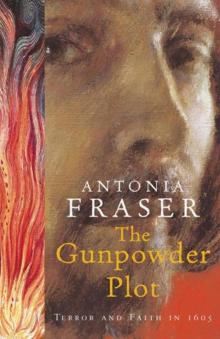 The Gunpowder Plot
The Gunpowder Plot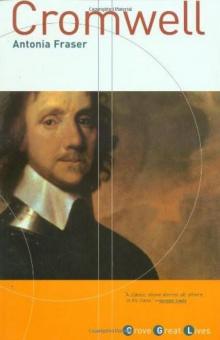 Cromwell
Cromwell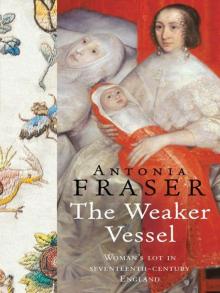 The Weaker Vessel: Women's Lot in Seventeenth-Century England
The Weaker Vessel: Women's Lot in Seventeenth-Century England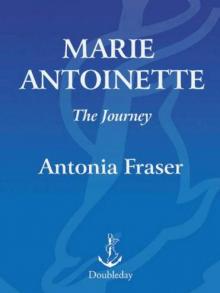 Marie Antoinette: The Journey
Marie Antoinette: The Journey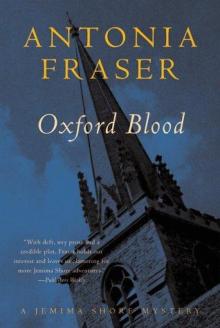 Oxford Blood
Oxford Blood Your Royal Hostage
Your Royal Hostage Cool Repentance
Cool Repentance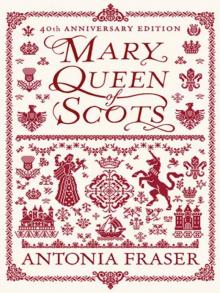 Mary Queen of Scots
Mary Queen of Scots Political Death
Political Death Royal Charles: Charles II and the Restoration
Royal Charles: Charles II and the Restoration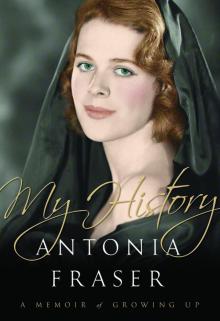 My History: A Memoir of Growing Up
My History: A Memoir of Growing Up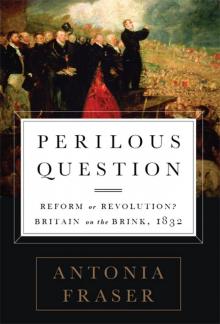 Perilous Question: Reform or Revolution? Britain on the Brink, 1832
Perilous Question: Reform or Revolution? Britain on the Brink, 1832 Jemima Shore at the Sunny Grave
Jemima Shore at the Sunny Grave A Splash of Red
A Splash of Red Must You Go?: My Life With Harold Pinter
Must You Go?: My Life With Harold Pinter Love and Louis XIV: The Women in the Life of the Sun King
Love and Louis XIV: The Women in the Life of the Sun King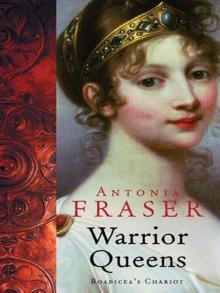 The Warrior Queens
The Warrior Queens The Wild Island
The Wild Island Quiet as a Nun
Quiet as a Nun Perilous Question
Perilous Question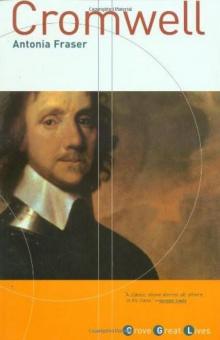 Cromwell, the Lord Protector
Cromwell, the Lord Protector Gunpowder Plots
Gunpowder Plots The Wild Island - Jemima Shore 02
The Wild Island - Jemima Shore 02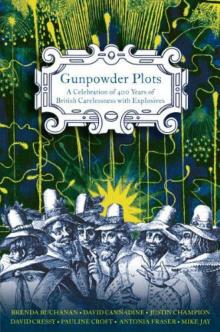 Gunpowder Plots: A Celebration of 400 Years of Bonfire Night
Gunpowder Plots: A Celebration of 400 Years of Bonfire Night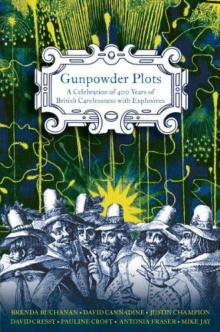 Gunpowder Plots_A Celebration of 400 Years of Bonfire Night
Gunpowder Plots_A Celebration of 400 Years of Bonfire Night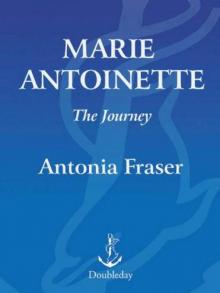 Marie Antoinette
Marie Antoinette Must You Go?
Must You Go?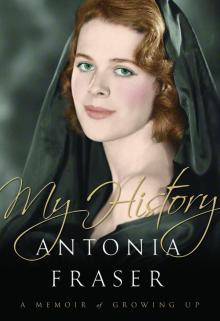 My History
My History